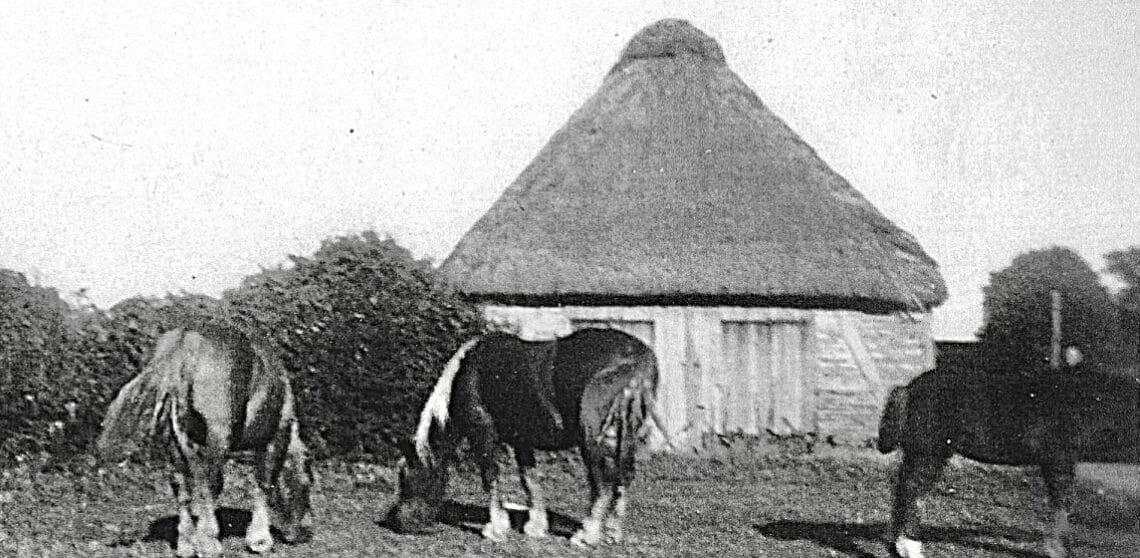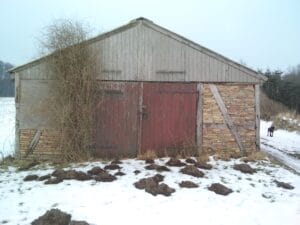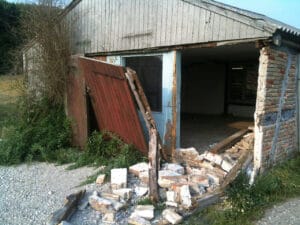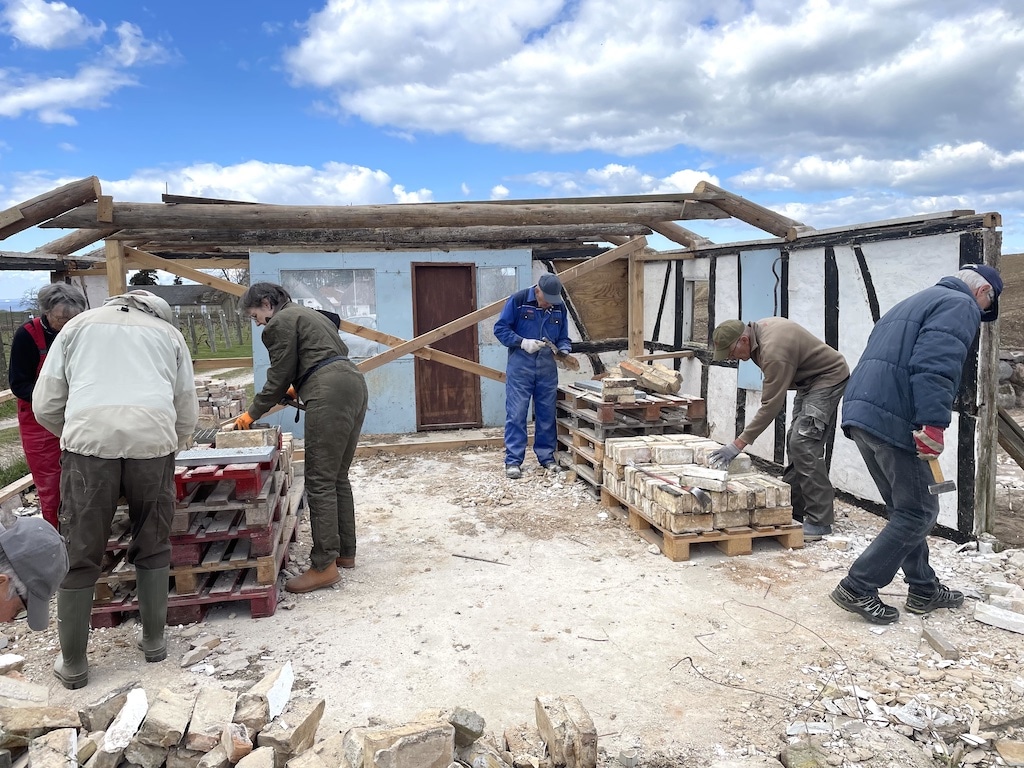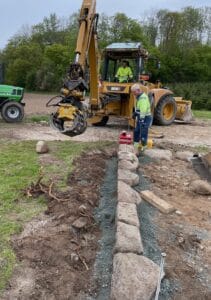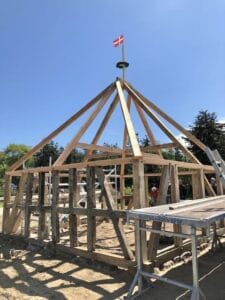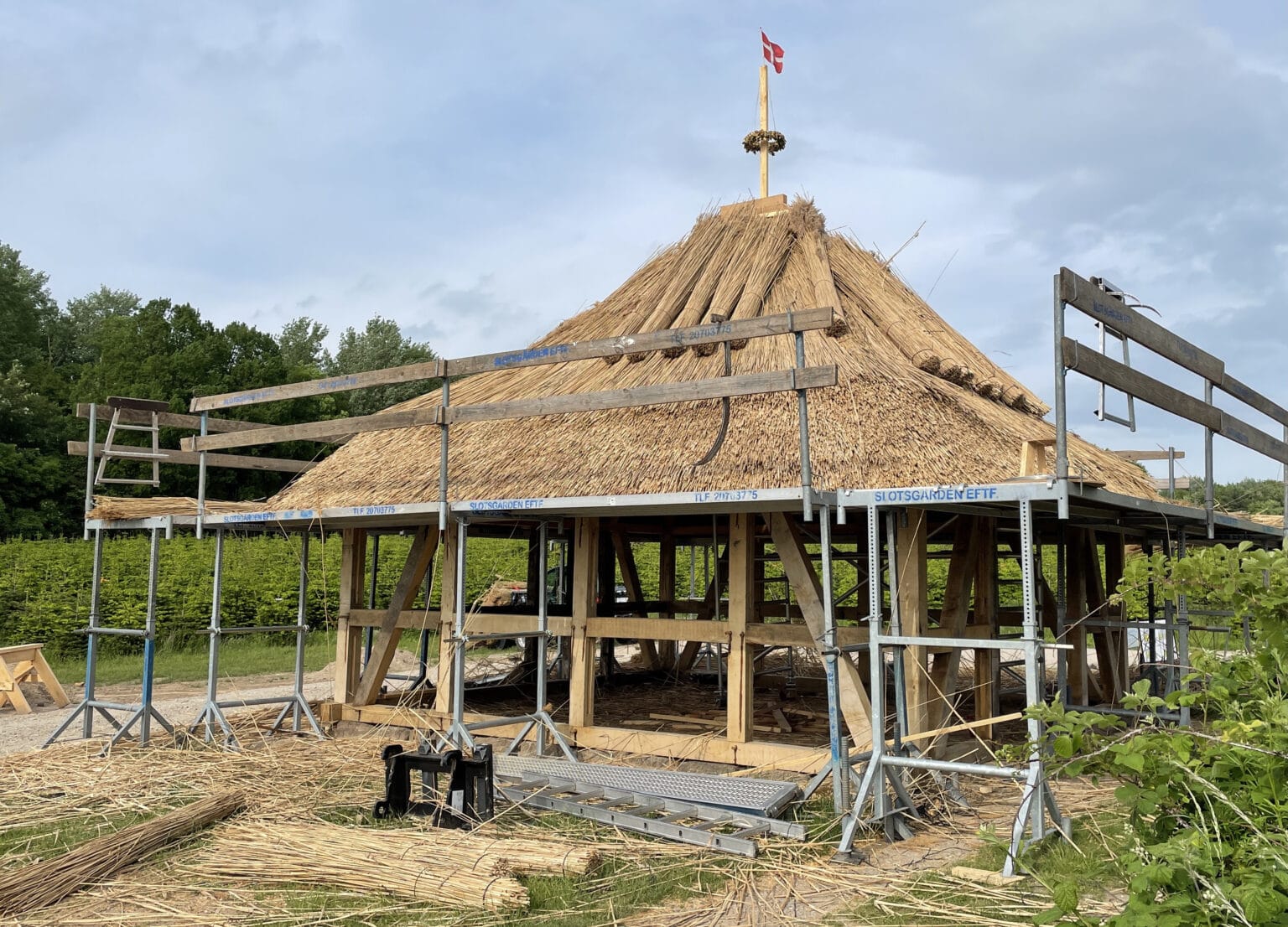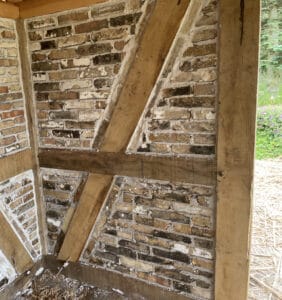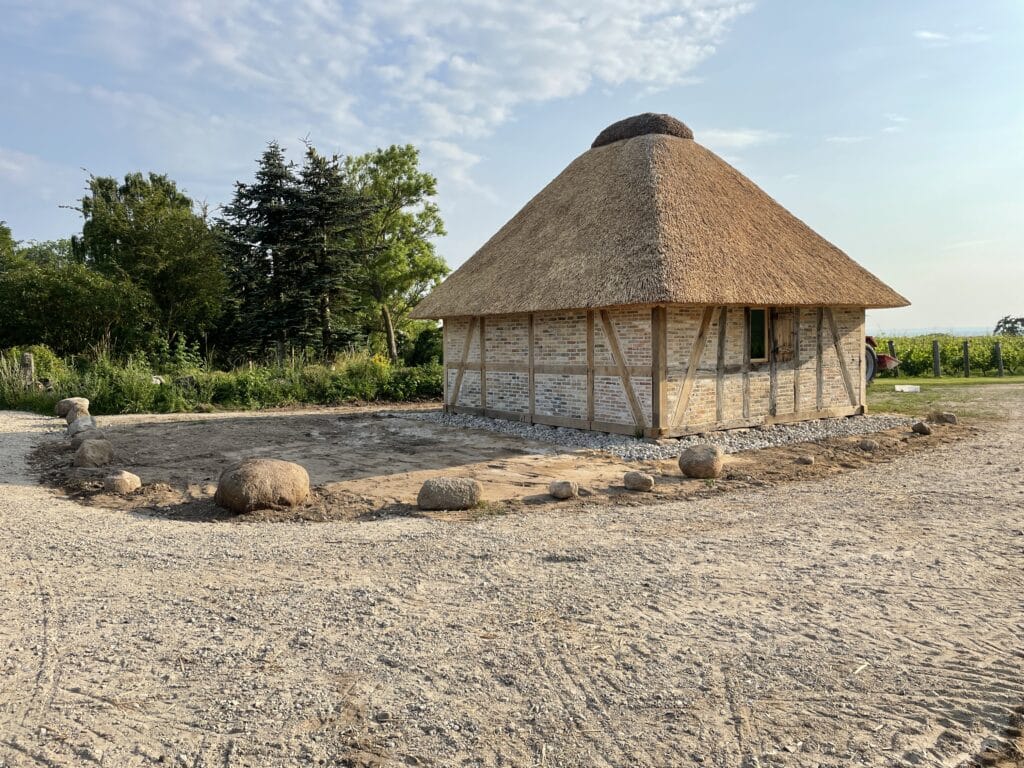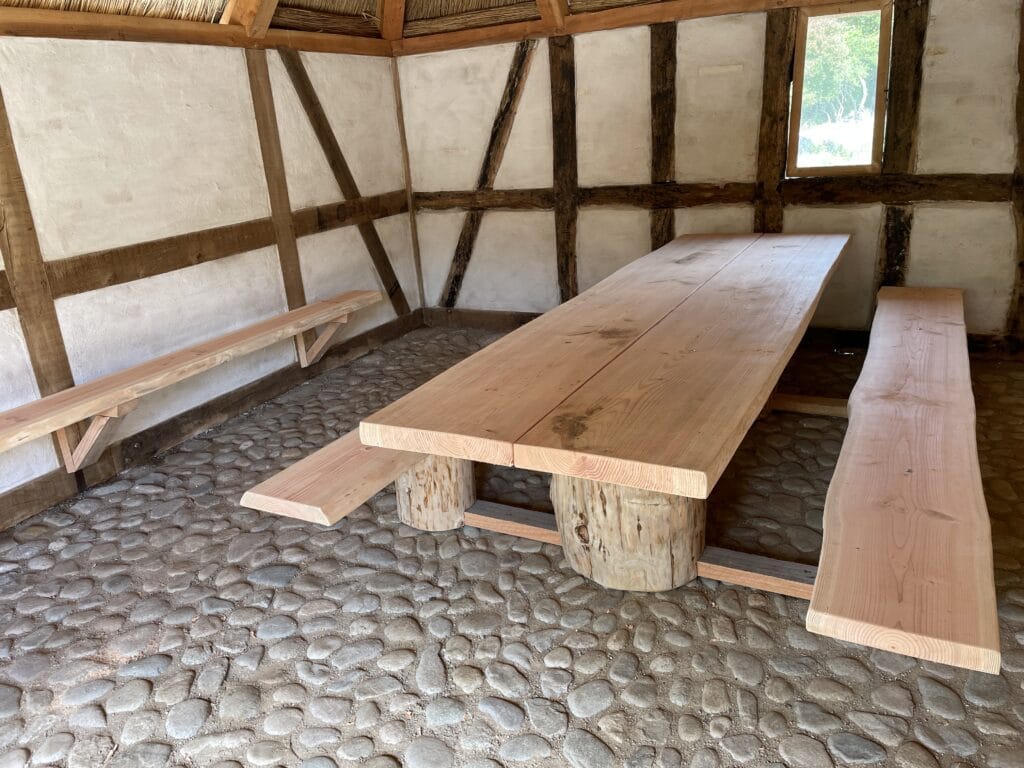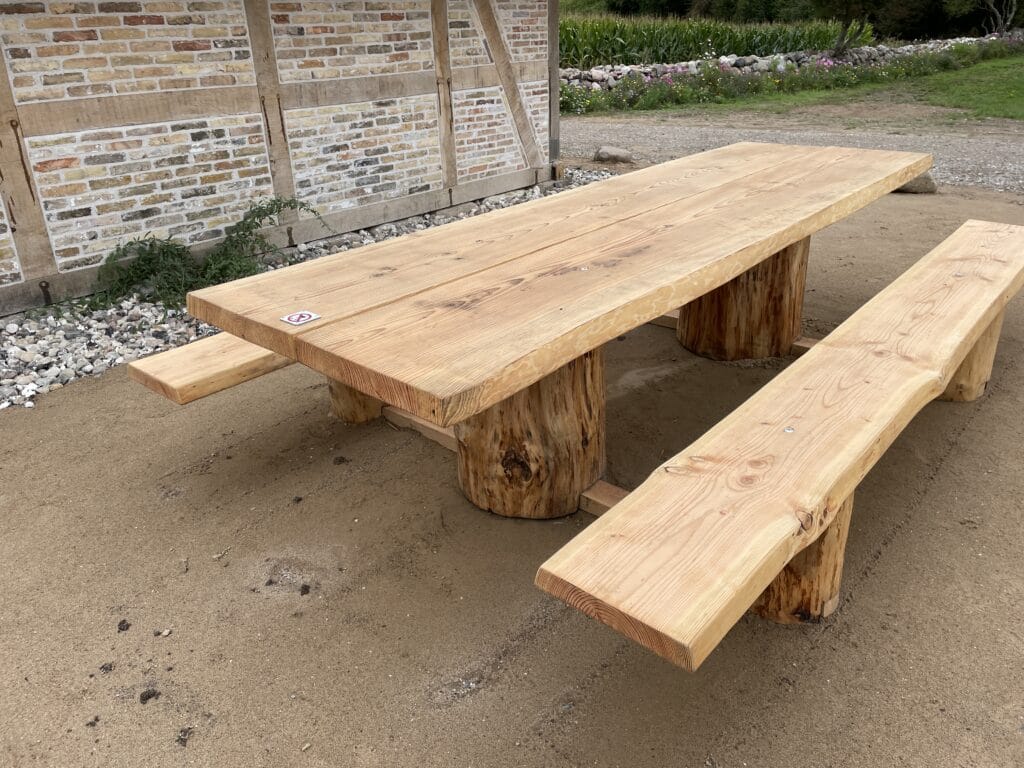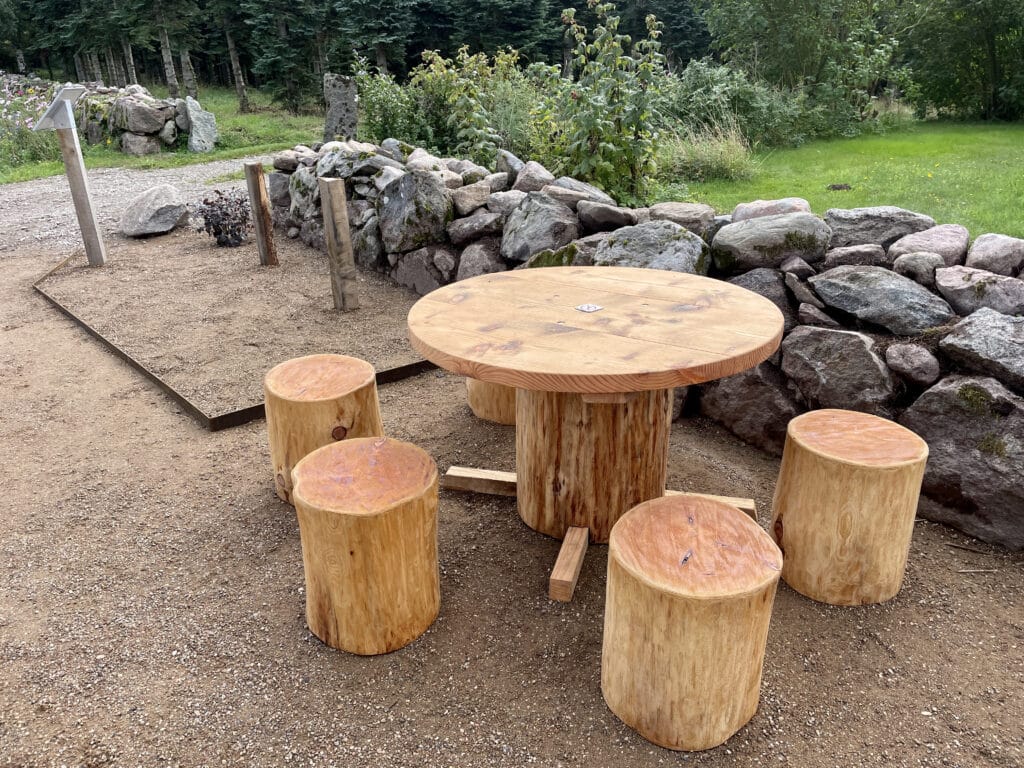Sinebjerg Field Barn
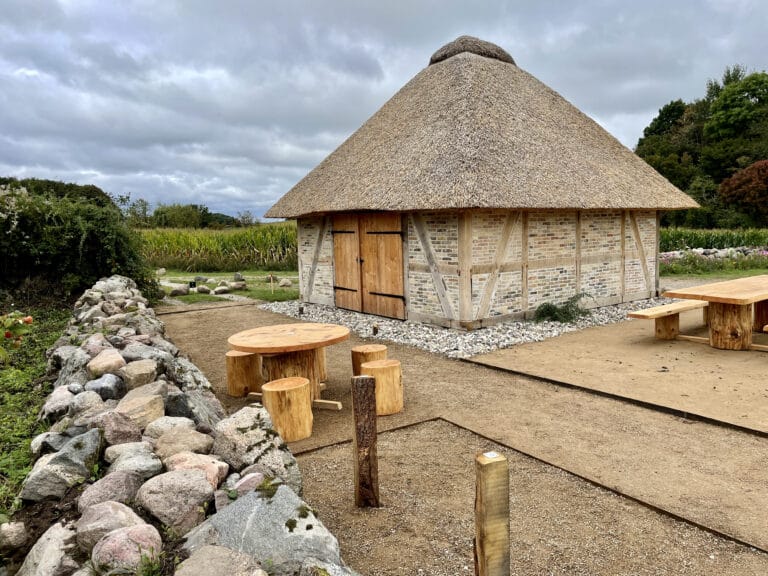
The Story of Sinebjerg Field Barn
As one of the oldest preserved field barns in Denmark, Sinebjerg Field Barn represents a piece of Danish cultural history.
What is a field barn?
Field barns became an important part of peasant culture when fields, meadows, and forests were subdivided from villages during the extensive agricultural reforms around the year 1800.
Many fields ended up a being a long distance away from the owner’s farm and need arose for small houses where animals and people could eat, rest, and seek shelter from inclement weather.
Horne Land had about 60 farms. Akin to site huts, 12 thatched roof, half-timbered houses shot up among the fields. They had room enough for a team of horses, a bit of hay, and the farmhands working the fields.
The history of Sinebjerg Field Barn
Sinebjerg Field Barn, located approximately 3.6 kilometres from its original farm of Knoldsborg, was built as a temporary building using recycled materials with a half-timber construction and a thatched roof around the year 1800. When the farms were moved out of the villages, the field barns were rendered superfluous. Nevertheless, Sinebjerg Field Barn remained in use for a considerable period of time, since for a long while it was located far away from the owner’s farm.
Due to a land partition around 1910, ownership was transferred, and the barn came to belong to the nearby farm of Kimesbjerggård, and later still that of Tåstebjerggyden 19. In connection with this, the 3.2 hectares of arable land belonging to the field barn were added to the adjoining farmland.
The barn has been rebuilt several times and has been renovated and adapted according to need. The thatch was replaced with a low-pitched asbestos cement roof, and the house was elongated without the use of half-timbering.
Up until 1979 Sinebjerg Field Barn served as a tool shed for farm equipment. Since then, the building has only been used for a period of a few years by the local hunters’ association.
The Field Barn Sinebjerg Society
In February 2018, the owner of the field barn, Niels Erik Præstekær, sold the building for 1 krone to the Field Barn Sinebjerg Society, which was founded by a group of local enthusiasts.
In collaboration with Geopark The South Fyn Archipelago, the Society ensured the necessary funding for restoring the field barn to its original condition with oak half-timbering, a thatched roof and cleaned original Flensborg bricks.
Beginning in the summer of 2021, Sinebjerg Field Barn once again serves as a small house in a field where people can eat, rest, and seek shelter from the elements.
The interests and care of the field barn are handled by the Field Barn Sinebjerg Society.
The Restotation of Field Barn
The Restoration of Sinebjerg Field Barn
In the years 2018-2021, the Field Barn Sinebjerg Society, in collaboration with the office of Geopark The South Fyn Archipelago,, restored Sinebjerg Field Barn to its original state and appearance.
The robust original building materials, such as the Flensborg bricks, the stone foundation, and various hand forged rivets and furnishings, have been reused, while those that had deteriorated have been replaced. This includes the seasoned oak timber, the doorways, the reeds, and the ridge of the roof made from eelgrass from Sinebjerg Beach.
Sinebjerg Field Barn is 31 square metres. It is now used as a lunch and break room on Horne Land in Geopark The South Fyn Archipelago, where visitors can enjoy their food, obtain information, and rest while enjoying the calm surroundings and the beautiful view.
The former owner of the field barn, Niels Erik Præstekær, relates:
“I remember the field barn having a thatched, high-pitched, hipped roof, and the south facing part of the roof being in very bad condition. Towards the end of the 1950s, my grandfather and the farmhands removed the roof. They laid a new low-pitched roof and installed asbestos cement sheets. I wasn’t impressed, but the decision was most likely made due to costs and the fashion of the time.
I few years ago, the dilapidated field barn was hit by a hay baler from a farm equipment rental company, and most of the west wall was torn down. We reinforced the building, so it didn’t collapse, and I had to make a choice. Either the field barn was demolished, or it had to undergo a thorough restoration.
My good colleague Finn Schaarup nudged me, thinking that the building should be restored to its original state. We found some old pictures. Finn did a wonderful preliminary sketch. Then all my doubts vanished. I had to get started!”
1. First, the roof was taken down.
2. Then, the Flensborg bricks were removed to be cleaned.
3. During the cleaning of the Flensborg bricks, it was discovered that there was a layer of soot underneath the inner layer of plaster. This indicates that the bricks were taken from a chimney and were thus already recycled when the field barn was first built. Potential odours and discolouration from the soot would not have mattered in a field barn.
4. The original hewn stone foundation (made from natural rock with no concrete) is straightened.
5. Topping out ceremony May 28, 2021.
6. Almost the entirety of the north wall is made up of timber from the original barn.
7. Now, the reed thatching can begin.
8. Rocks are put in place.
9. And today, the field barn stands as it did originally, but serves a new purpose as a lunchroom for the public.
